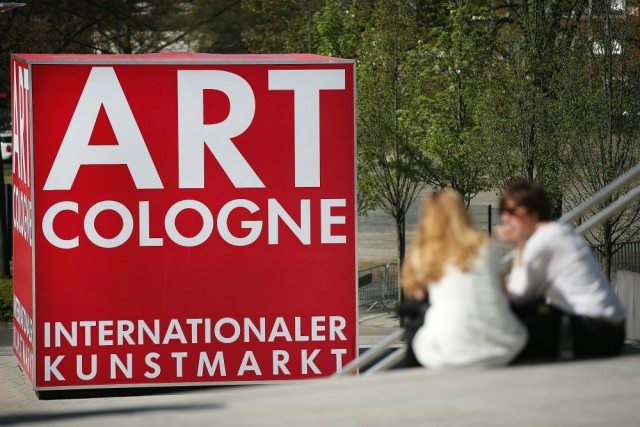Art Düsseldorf will open its doors to the public from November 17th to 19th, inviting visitors to check out its large galleries full of well-known participants.
Ever since the new fair was announced, it has created suspense – partly because Swiss trade fair company MCH, which also organizes the famed global art fair, Art Basel, has had a hand in organizing Art Düsseldorf too.
The strong Rhineland art region is likely to have been one of the reasons why MCH decided to get on board. Over the past few years, there had been a few attempts to establish art fairs in Düsseldorf, but all were made in vain.
Interest in Düsseldorf’s lively art scene and its abundance of collectors can be seen in the fact that altogether 270 participants registered to take part in the new fair. But Art Düsseldorf organizers announced in September there would be only be about 80 participants “for reasons of space.”
Among the 80 participants are international heavyweights.
David Zwirner and Marlborough Contemporary from New York will be present as well as other galleries from the US, Austria, Belgium, the Netherlands and Luxembourg. Gallery owners from Israel, Japan, Turkey and Uruguay have also been invited.
But there will be local galleries present too. Around 20 galleries will represent Cologne and Düsseldorf, including Michael Werner, Thomas Rehbein, Hans Mayer, Schönewald and Van Horn.
About 50 kilometres away from Düsseldorf in the neighbouring city of Cologne, annual fair Art Cologne – much larger than Art Düsseldorf – hosted around 200 participants last April.
But there are no overlaps between the two fairs, according to Art Düsseldorf director Walter Gehlen, who pointed out that a large number of participants in his fair are also represented in major international exhibitions and many of them are using the new fair as a platform parallel to Art Cologne.
Young collectors are an important target group in the art fair market, Gehlen added.
 Art Cologne is held annually in April. Photo: DPA.
Art Cologne is held annually in April. Photo: DPA.
Skeptics initially feared that Art Düsseldorf would split the Rhineland art scene.
In April Art Cologne boss Daniel Hug had even accused MCH of “colonialism”.
But Gehlen disagrees. “Colonization is a process that involves oppression, exploitation and threat,” he said. “Our exhibitors are very happy to come voluntarily because they are convinced by Art Düsseldorf’s concept.”
In June, Art Basel boss Marc Spiegler said: “Each trade fair generates new markets and new collectors.”
Nevertheless, organizer of Art Cologne, Kölnmesse, has already taken matters into its own hands.
In September, Kölnmesse for the first time helped organize Art Berlin, an exhibition during Berlin Art Week. This was done with the aim to develop Art Berlin into a leading art fair alongside Art Cologne.
One of the main drawbacks about the Berlin art scene though is that there still aren’t many buyers and collectors there – these people are more often found in the Rhineland, Belgium or France.



 Please whitelist us to continue reading.
Please whitelist us to continue reading.